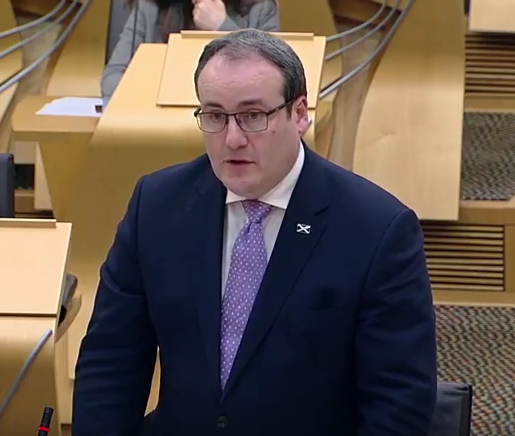Hot on the heels of the UK Government’s new Clean Growth Strategy and Industrial Strategy the Scottish Government announced today its first ever Energy Strategy! Needless to say the first thing we did was to scan the document for any mention of the phrase “electric vehicle”, and sure enough EVs get a mention in Paul Wheelhouse’s ministerial statement:
We are well on the road to fully decarbonising our electricity system in Scotland. The challenge facing us now is to ensure a similar decarbonisation of our energy requirements for sustainable transport – and to deliver a well-balanced system capable of providing secure and affordable energy to meet Scotland’s needs.
Scotland is taking a leading role in promoting electric and other low-emission vehicles – with an ambition to phase out the need for new petrol and diesel cars and vans by 2032. This is as much an energy system ambition as a transport one. We will need to develop and manage the necessary charging and other network infrastructure, while building awareness and confidence on the part of consumers. The challenges here are more than matched by the economic opportunity and environmental benefits which success will bring.
Moving on to the body of the document we are informed that:
More of us are turning to electric vehicles (EVs). At the end of June 2016, there were 3,575 electric cars and vans licensed in Scotland (eligible for the UK Government’s plug-in car and van grant schemes), compared to 2,050 at the end of June 2015. 78 More EVs were sold in Scotland in 2015 than the previous four years combined, with 2016 sales expected to have risen further. Our ChargePlace Scotland network has expanded to over 600 publicly available EV charging points, equating to over 1,200 charging bays. This includes over 150 ‘rapid’ charging points, one of the most comprehensive networks in Europe.
Searching further for any mention of static and/or mobile storage technology we learn that:
Combining storage with wind and solar assets presents a valuable solution for the energy system as a whole, offering the potential for demand to be managed locally. This kind of flexibility and control will be important as electric vehicles become an integral part of the transport system.
More ULEVs will mean higher electricity demand, creating particular pressures for local distribution networks as drivers look to connect and charge their vehicles. We are already discussing these issues with Scotland’s grid operators, and starting to consider different options and approaches.
There will be big challenges here – but opportunities too, for example, in developing solutions such as smart chargers, and interfaces which can manage and reduce pressure on electricity networks. The development and use of innovative software can reduce the need for investment in more expensive and disruptive “hardware”, in the form of grid upgrades. There is a big innovation opportunity here for Scottish businesses, and a chance to develop and export the necessary technology and solutions. Initiatives such as the “My Electric Avenue” project have already looked at some of these issues, and others are underway. A report by Transport Scotland and Urban Foresight published in 2016 concluded that large numbers of EVs across Scotland can help support ‘whole-system’ energy solutions by:
- providing significant and distributed energy storage capacity, able to absorb intermittent loads from renewable generation;
- helping to integrate more micro-generation;
- increasing overall energy efficiency; and
- potentially providing a source of grid power input when required.
which is vehicle-to-grid technology in all but name!
Finally, for the moment at least, here’s video of the proceedings in the Scottish Parliament earlier today:
We’ve set it to start where the Ministerial Statement mentions:
New commitments on electric and other low emission vehicles, and our intention to support up to £60 million of new innovation funding under the Low Carbon Innovation Fund, setting Scotland apart as a country at the vanguard of the global move to low carbon energy systems.

